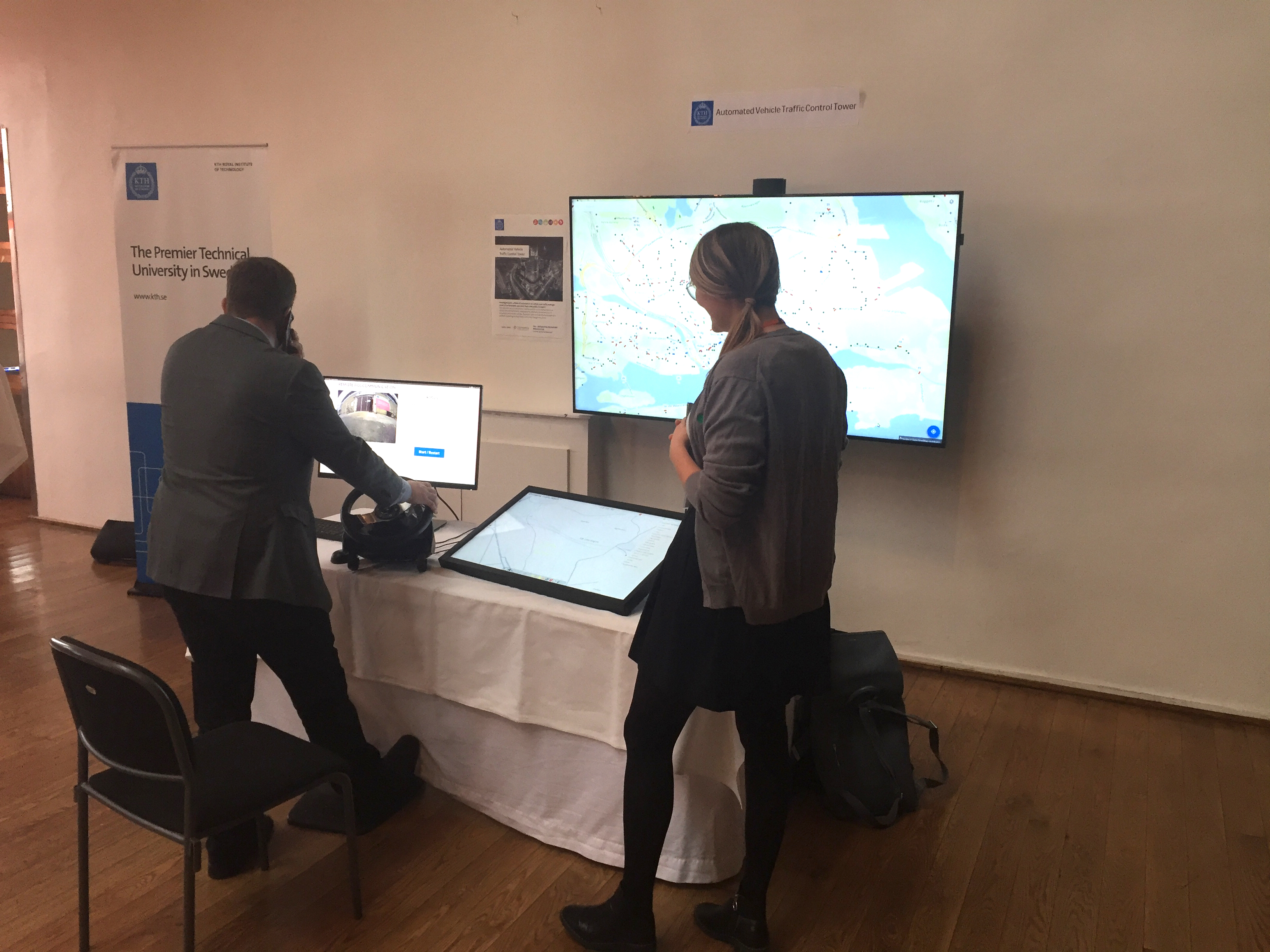Automated Vehicle Traffic Control Tower: Phase 1

In the Automated Vehicle Traffic Control Tower project phase 1, we investigated the effects of automation on vehicle and traffic management of commercially operated fleets and public transport.
The goal of the project's pre study phase was to understand the role of a traffic control tower (TCT) for automated road vehicles (AVs). Such a control tower will be used for control and operations on vehicle, fleet and traffic levels, which all will be affected by the introduction of automated and driverless vehicles. In a joint effort by the Integrated Transport Research Lab and industry this project sought to accelerate the research on a platform supporting the supervision, control and management of AV’s. In this study, gaps, barriers, and potential different scenarios were identified.
Read the final report (pdf 2.0 MB)
The possibilities related to self-driving vehicles are manifold; increased safety, more effective traffic, and development of new mobility services that replace private car ownership and contribute to shared travel. However, there are still several challenges to address when it comes to self-driving vehicles. In the long term, a system perspective in traffic and infrastructure management is needed in order to realise the benefits of automated vehicles in the transport system. In a shorter term perspective, other challenges arise. For example, driverless vehicles will need support to make decisions in complex and dynamic traffic situations, while their sensors, algorithms, and technology are still under development.
Using the Automated Vehicle Traffic Control Tower could in the long term contribute to creating an effective transport system. Meanwhile, It could also assist driverless vehicles with difficult situations, making it possible to reap the benefits of self-driving vehicles earlier.

Conclusions from the preliminary study
One conclusion from the preliminary study is that the Control Tower will play an important role in the development of an automated transport system in the short, medium and long term. There are many expectations and tasks for the AVTCT, including remote control of vehicles, vehicle fleet management, and assisting vehicles in determining which roads the vehicles are allowed to drive on. Several types of control towers will be needed, depending on the objectives of different actors (e.g vehicle manufacturers, vehicle owners, road maintenance, traffic management) that can work together in an ecosystem. This ecosystem can be seen as an application of "system of systems".
Project partners:
Integrated Transport Research Lab at KTH (coordinator), Mobile Services Lab at KTH, Asta Zero, Carmenta.
The project is funded by

Contact
If you have any question or remark about the AVTCT project, you can contact Rami Darwish, project leader for the AVTCT: rami.darwish@indek.kth.se


